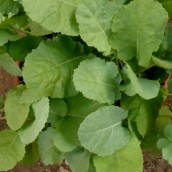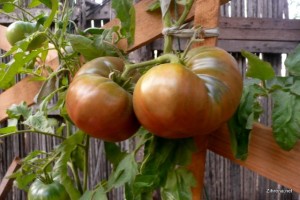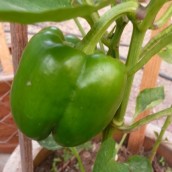For the third year, I am continuing my tropical garden experiment, trying to determine what are the best vegetables for our area (Ixtapa Zihuatanejo, Mexico, on the Pacific coast). Here we’re most definitely in what is called climate Zone 11, the hottest zone in the North American classification, which means that we have average temperatures of forty degrees Fahrenheit–4.5 degrees Celsius–or higher. Well, I must say, our temperatures are a lot higher than that. We’re hard pressed to ever drop into the high fifties Fahrenheit — fourteen or fifteen degrees Celsius. We need hotter zone classifications. We’d probably end up in at least in Zone 15.
In any case, I’ve tried several different plants and seeds, some successfully (so far) and others not quite as successfully (which in gardening language could translate into woeful and total failure). One of my favorite gardening quotes happens to be:
It takes a while to grasp that not all failures are self-imposed, the result of ignorance, carelessness or inexperience. It takes a while to grasp that a garden isn’t a testing ground for character and to stop asking, what did I do wrong? Maybe nothing.
— Eleanor Perényi, Green Thoughts
So, what can I tell you are my greatest successes and joys so far? What have been my best producers? Which plants in my tropical garden have best stood up to the heat, poor, beachside soil, salt air, insects, and the moldy humidity of the tropics?
Collards: Vates Collards, in particular. To date, Collards seem to be the most hardy and resistant of greens. My collards have survived the heaviest of rainy seasons and the hottest of hot, dry spells when the rains have failed to fall. I’ve left them sitting unattended for weeks. Still they flourish and produce large and healthy, albeit sometimes tough and gassy, cabbage-like leaves. And to beat that, almost no insect has ever attacked my collards in any but the most ineffective way.
Tomatoes: Although my tomato harvests haven’t been spectacular, perhaps because we live only a few paces from the ocean, I’ve had enough success with Cherokee Purple, Eva Purple Ball, and certain cherry tomato varieties to keep me interested in trying more. I’m still hoping to be overwhelmed with more vine-ripened, home-grown tomatoes than I know what to do with. This year I’m experimenting with Green Zebra and Better Bush tomatoes, which are especially suited for container growing. Last year I tried a Bedouin tomato variety that I was quite pleased with and will sow again this year. Powdery mildew is a problem in my garden, though, and my tomatoes usually end up succumbing to its ravages. Sprays with neem oil, baking soda, and liquid soap lessened the effects last year; I’ll be prepared to use that technique even more often this coming growing season.
The Secrets of Growing Tomatoes (in the Tropics/Subtropics)
Okra: Okra grows well in our heat. The only caveat is to pick the pods when they’re still young and to resist leaving them for a day or two more to see if they can get bigger and still be edible. They will get bigger; however, they may not be edible. They quickly go from tender to woody. I’ve sown the Clemson Spineless variety and had good results. I find that eight to twelve plants are enough to give us a steady feed of okra for the two of us.
Goa beans: These beans, also called winged beans (see the Winged Goa Beach Experiment) fascinate me. I’ve kept a vine from last year (rather, it consented to stay live through rains and heat and abandonment, much as the collards did) and I suspect it will sprout healthily anew once I trim it back a bit. It just keeps on going: the Energizer Bunny of the plant world. Tender Goa beans are great in salads and stir-fries.
Kale: Everyone says kale needs cool temperatures; kale needs to freeze; kale is a cold climate vegetable. But I’ve grown kale (dwarf blue curly kale and Russian purple kale) for two years now, and it does just fine. Okay, maybe it’s less sweet and tender than if it had been subjected to a cold snap or two, but I am quite happy with the slightly tougher version.
Bok Choy, Choy Sum, and Gailan: These brassicas are mainstays in Oriental cooking and are said to like cooler climates, but they’ve grown well for me and have given me much joy on my plate. The choys have white, juicy stems, and they all have rich, green leaves. Pest attacks are minimal. What more could one want?
Peppers: We’re in Mexico, remember. Chile peppers are a staple here: jalapeños, chile piquin, poblanos. Sweet peppers also grow relatively well. I’ve grown California Wonders and mixed mini salad peppers with medium to high yields. Peppers like the warmth of the tropics.
Eggplant: Okay, so eggplants grow like weeds and love the heat. It’s nice to have a steady stream of eggplants coming ripe in the garden. Besides, they have beautiful, purple flowers. Until now, I’ve only sown the small, Japanese variety; this year I have planted both Black Beauties and Thai Green eggplants to see how they fare.


